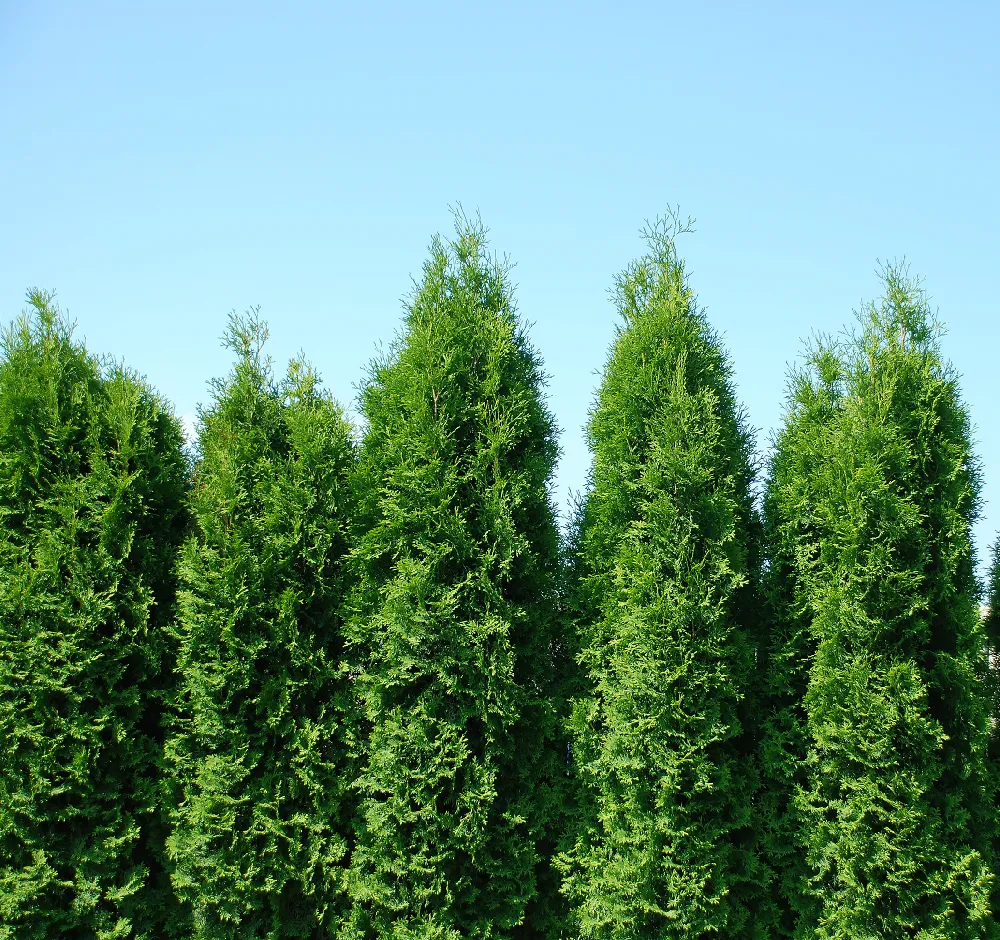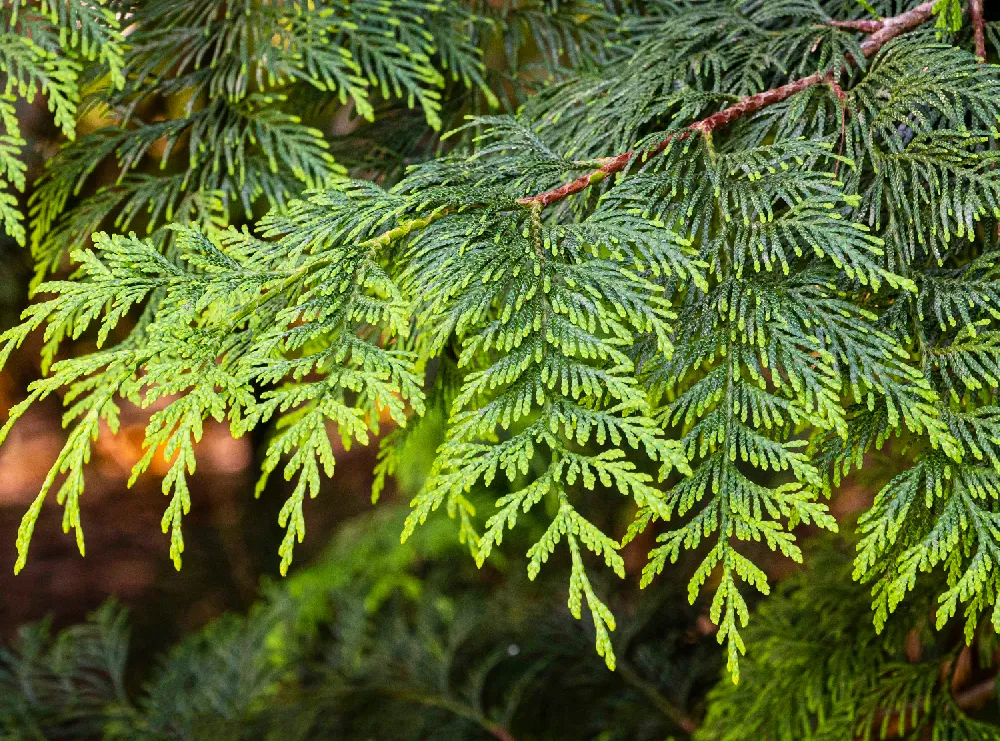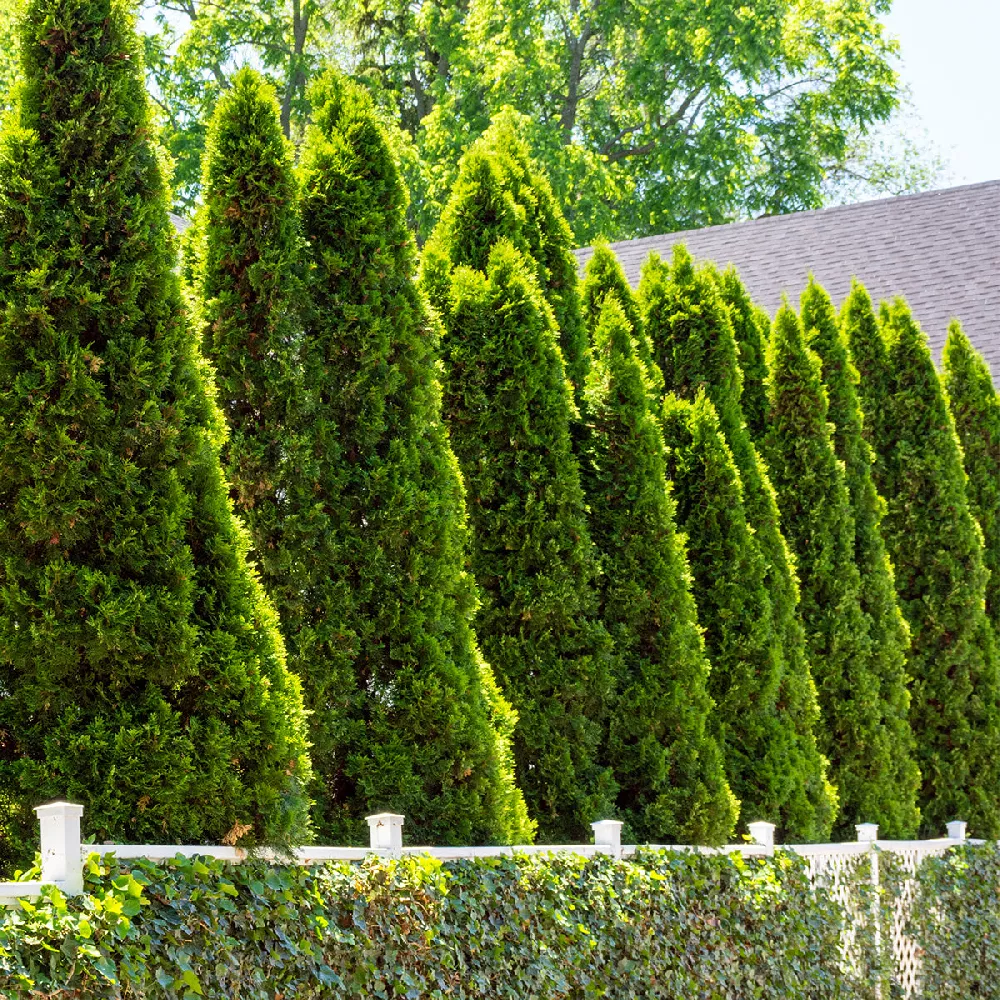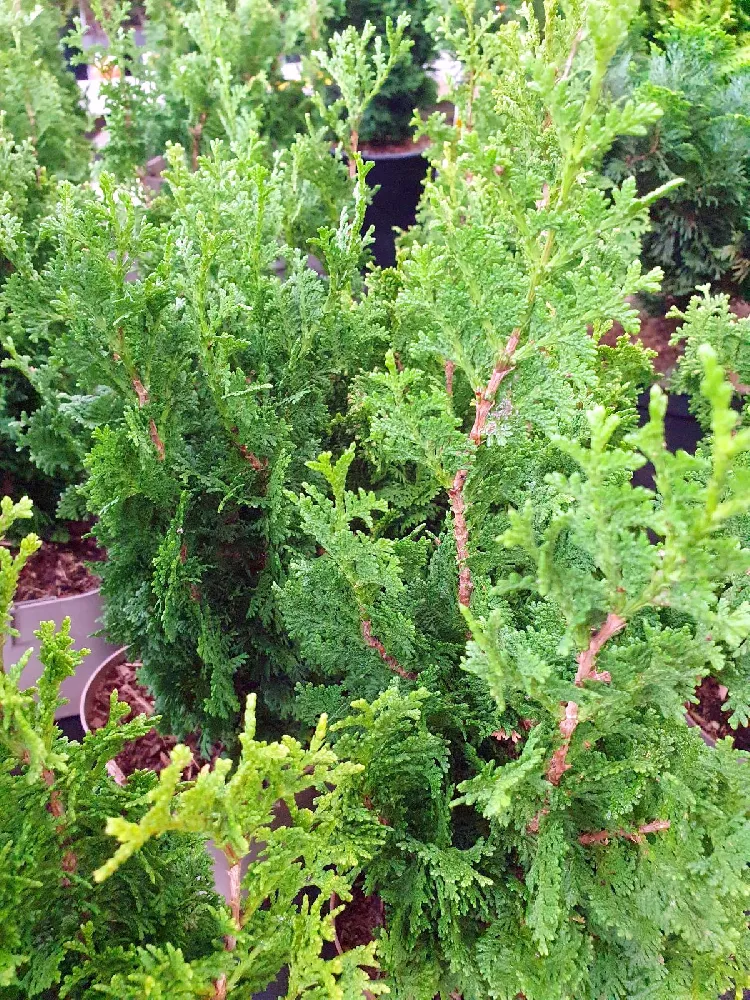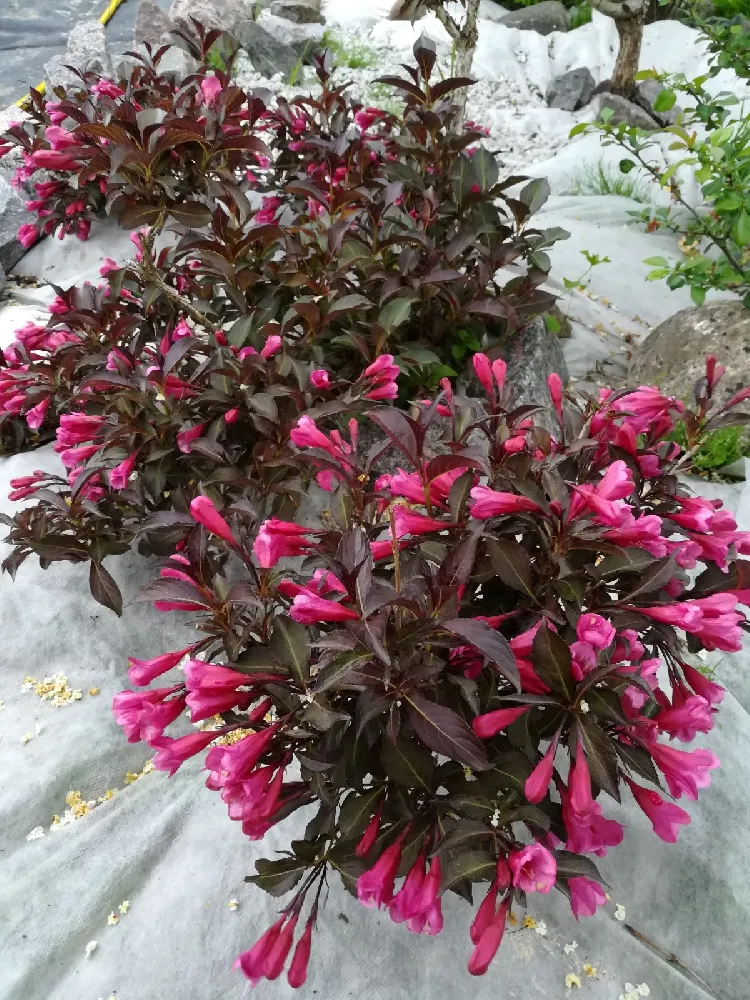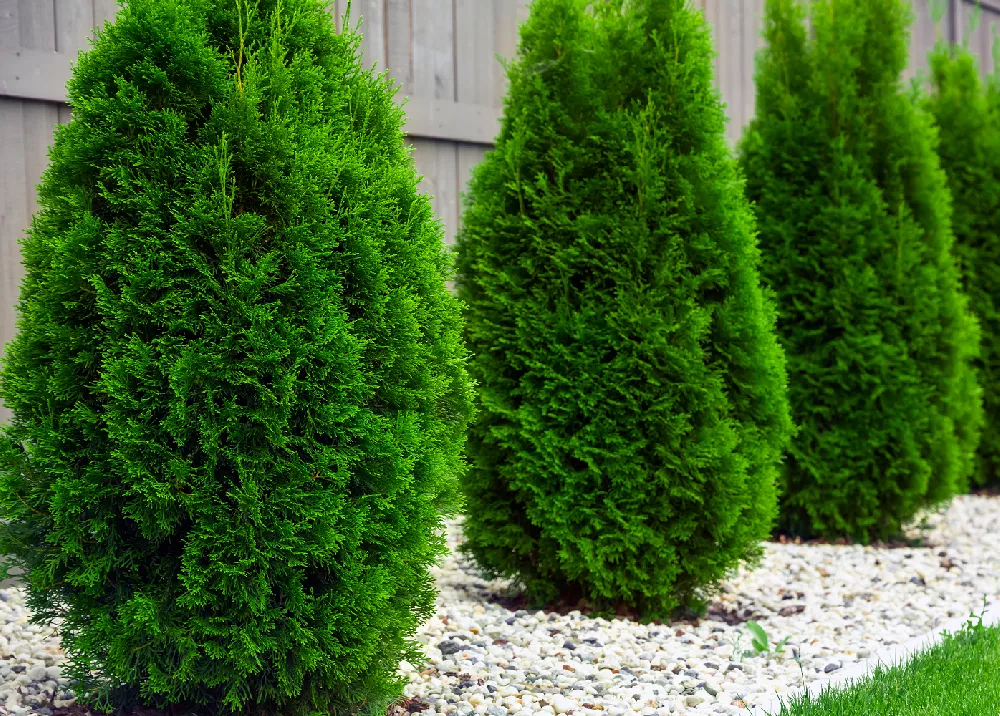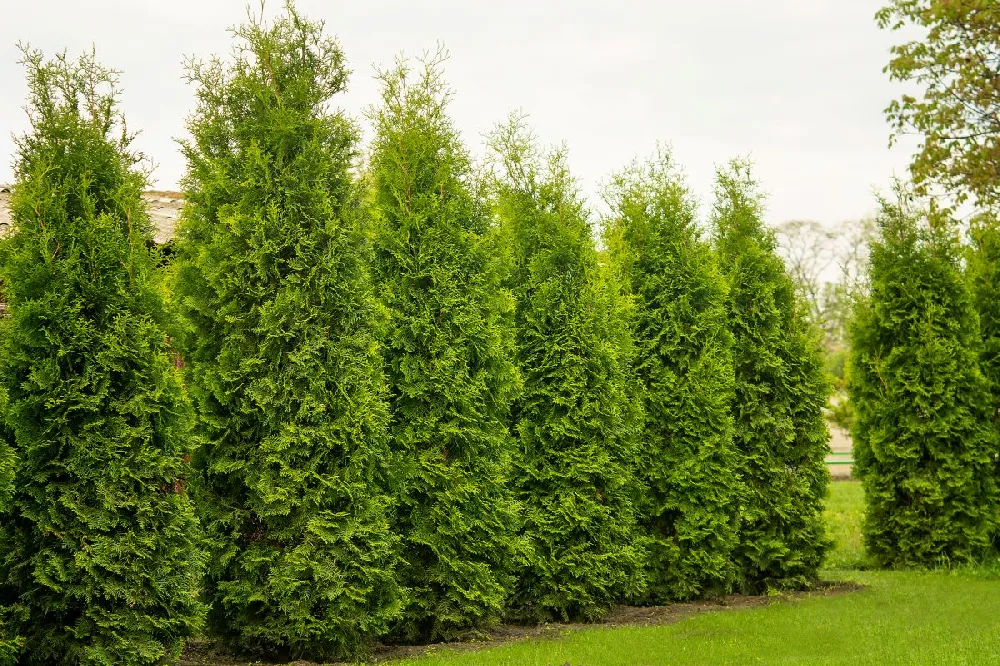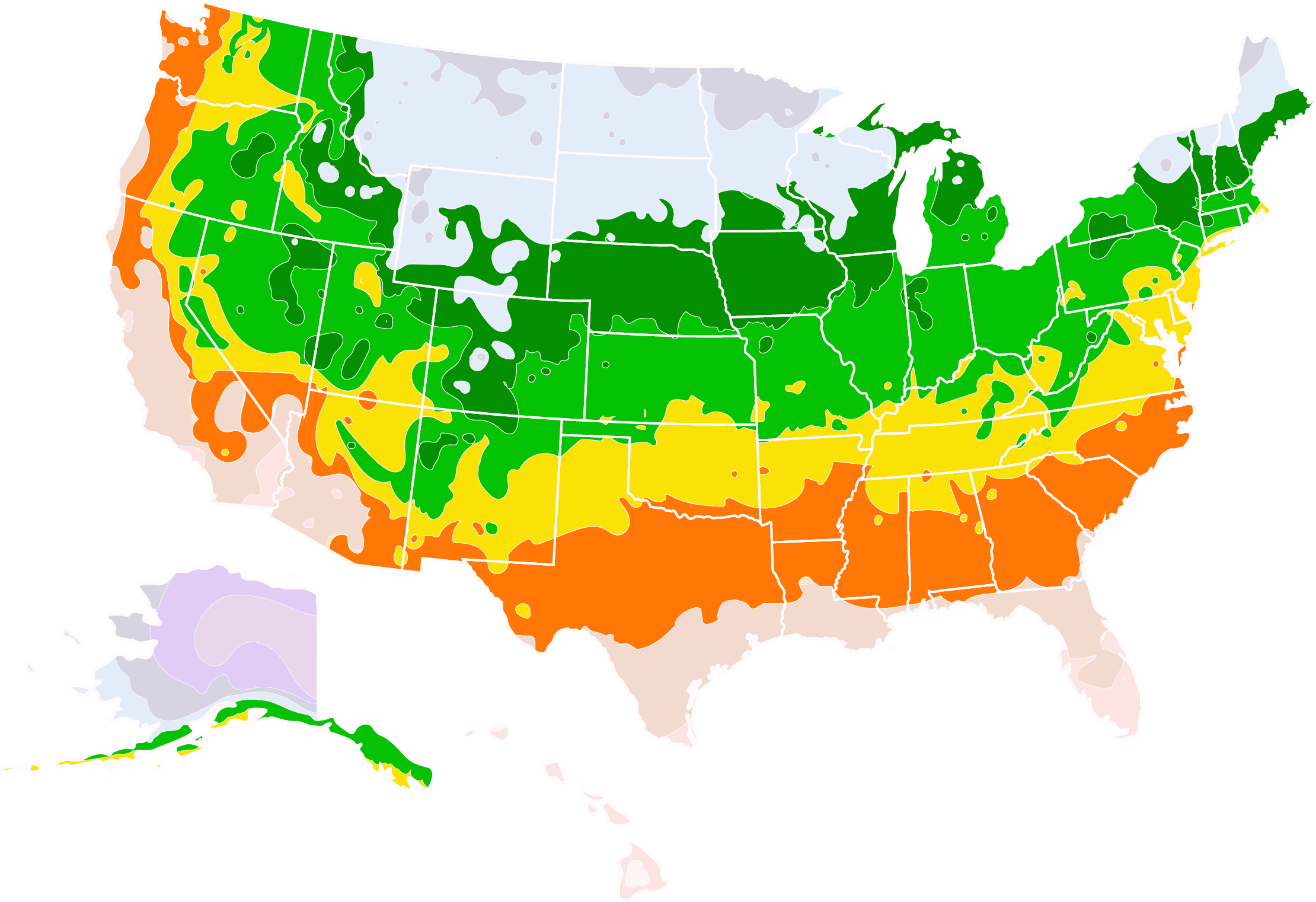- Home >
- Evergreen Trees >
- Junior Giant Thuja Tree
Junior Giant Thuja Tree for Sale - Buying & Growing Guide
It may sound like an oxymoron to call something a "junior giant," but the Junior Giant thuja tree, Thuja x 'Junior Giant' PP31,297p2, fits the bill admirably. It's a mid-sized tree: smaller than the classic Thuja Green Giant but larger than the Baby Giant arborvitae, and it maxes out at a height of 15 to 20 feet. That makes it the perfect size for smaller homes or any spot where you don't want a true giant towering overhead. The Junior Giant thuja tree is an excellent border tree, marking your boundary handsomely and providing a wind and noise break. It can stand on its own as a specimen tree, too, or highlight a corner or entrance of your home nicely. Need more reasons to add Junior Giant thuja to your landscape? Here are three:
- Its narrow, upright shape fits well in smaller spaces.
- It needs little pruning or extra care.
- It grows well throughout most of the continental U.S., down to -10 degrees Fahrenheit.
Enter your zip code to find nearby stores that may carry this plant.
Plant Care
Sunlight

Plant your Junior Giant thuja tree in a spot that receives full sun — at least six hours of direct light a day.
Watering
Once established, your Junior Giant thuja tree will only need supplemental water during very hot or dry weather.
Fertilizing

Unless grown in a container, your Junior Giant thuja tree does not need supplemental feeding.
Planting and Care
Planting instructions
Site your Junior Giant thuja tree in a spot that has well-drained soil and receives at least six hours of sun a day. Avoid planting it under overhead utility cables, as it may interfere with them when mature. Unpot your tree and tease out any encircling roots, which can girdle the tree and slowly kill it. Dig a hole that’s as deep as the root ball and two to three times as wide. Place the tree in the hole, spreading out the roots. Holding it upright and steady, fill in around the roots with topsoil, tamping down as you go to eliminate air pockets. Water thoroughly. Apply a 2- to 3-inch layer of an organic mulch, such as bark chips, around the root zone to conserve moisture and hinder weed growth, keeping it from touching the trunk itself.
Watering and nutrients
To help the roots become established, for the first month or so after planting, water your Junior Giant thuja tree every other day unless you receive rain.. Taper back to twice a week for the rest of the first growing season. Once established, your tree will only need supplemental watering if you’re experiencing extreme heat or drought conditions. The Junior Giant thuja tree is a light feeder and does not generally need fertilizer. It does benefit from an annual application of compost under the mulch, however.
Pollination
Thuja trees are monoecious, which means that the male and female reproductive elements are on one tree. It reproduces, like all conifers, by cones that produce pollen and seeds. The pollen is dispersed by wind, fertilizing the seed cones.
Pruning
The Junior Giant thuja tree doesn’t need regular pruning. It naturally forms a tall pyramidal shape that is quite pleasing. The only pruning duty you’ll have is to monitor the tree for broken, diseased, or damaged limbs, which should be trimmed out when you see them.
Pests, diseases, and animals
Although the Junior Giant thuja tree is resistant to most pests, you may occasionally see bagworms, which make small brown bag-like objects that hang off the tree. Pick these off if you see them; the insects can defoliate your tree. Diseases of the thuja tree include phomopsis twig blight, a fungal disease that causes dieback at the tips of the branches. Prune out damaged leaves and apply a copper fungicide if it spreads. Few animals will bother your thuja tree, although young saplings may be browsed by deer.
Achieving maximum results
Although a mature Junior Giant thuja tree can reach 15 to 20 feet when grown outdoors, there’s another option if you love this thuja but not the height: Grow it in a container. A container-grown Junior Giant thuja will have its roots constrained by the pot and thus won’t get taller than 6 feet or so. Choose a container for your tree that is about twice the size of the root ball with good drainage, and use a good-quality planting mix. Keep in mind that a container-grown plant needs more frequent watering and occasional feeding with a fertilizer designed for landscape trees and shrubs.
FAQs
Where can I grow a Junior Giant thuja tree?
How do I use a Junior Giant thuja tree in my landscape?
The Junior Giant thuja is ideal as a hedge or windbreak. With its upright habit, multiples of this cultivar can be planted closely together to shield your home from wind or provide privacy. When planted in a grouping of three or five, they are an arresting sight on a front lawn or lining a long, winding driveway. Two container-grown thujas would look splendid flanking a front entrance, and they add elegance and stature to a patio or deck setting.
Is the Junior Giant thuja a good tree to encourage wildlife?
Yes, it is, especially when planted in groupings that provide cover for songbirds and small mammals. Some animals use the seeds and foliage as a food source, and although deer will avoid browsing on a mature thuja tree, they may take a bite out of a young sapling.
Compare Similar Products
Customer Reviews
 So pleased!
So pleased!It was so exciting to get my trees in the ground! All 10 trees arrived in excellant condition and timely for planting. Looking forward to many satisfying seasons.
 better than expected
better than expectedarrive healthy and pest free
 Junior Giant Thuja tree
Junior Giant Thuja treeI kind of dislike giving a review just when I receive a plant. All you can say is that it arrived on time and looked good. When I read these reviews I always wish that they had waited a year or two to see how they are then. These arrived in time. Two of the three were brown on their tops. I've planted them and hope they grow.
 Junior Giant Thujas: great!
Junior Giant Thujas: great!Trees arrived carefully packed and in perfect condition. We're looking forward to ordering more to line our 800-foot driveway.
You can't add more Product Name - Product size to the cart.
OK